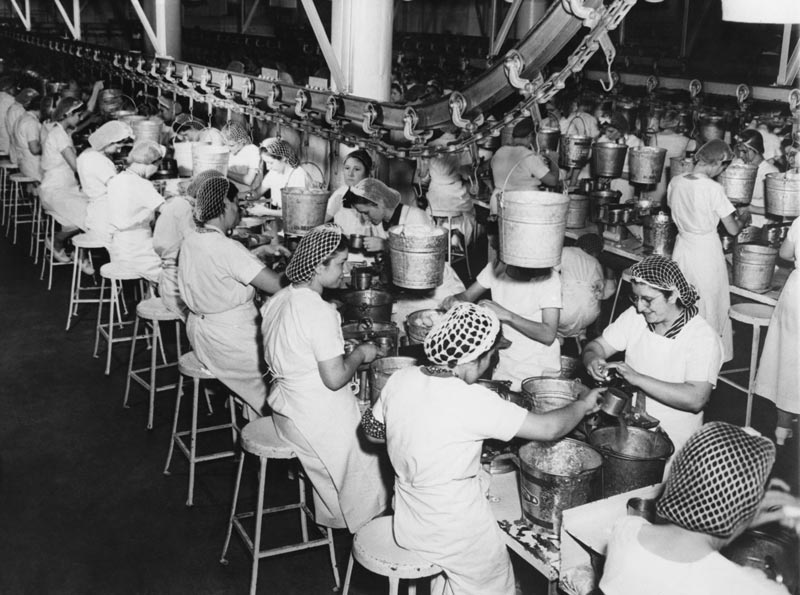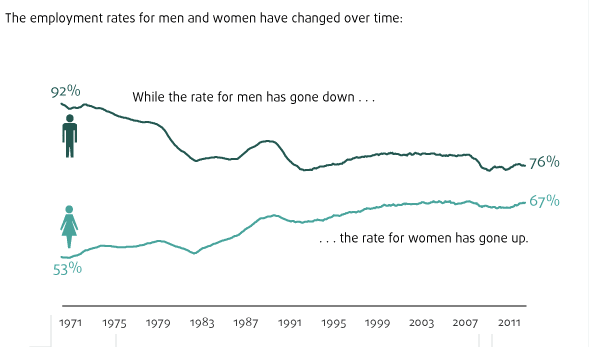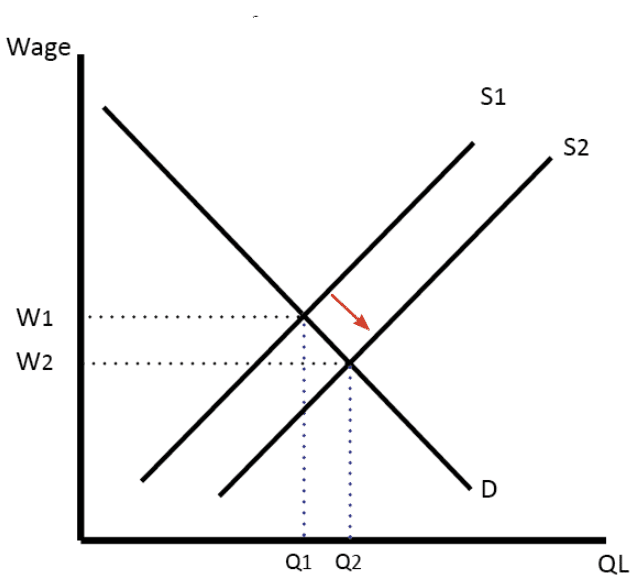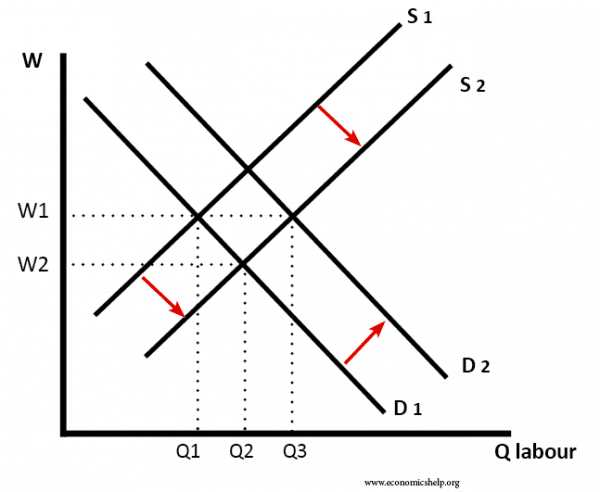A look at the economic impact of an increase in the supply of female workers in labour markets.
In summary:
Increased female labour market participation will lead to increase in supply of labour, and in theory, could lead to lower wages. However, a gradual increase in female labour market participation is often in response to rising demand for certain jobs, and is consistent with rising real wages. The increase in female labour market participation can also increase labour market flexibility and impact income distribution with society.
History – Female labour market participation
The industrial revolution saw a decline in rural agrarian life and a rise of factory work. Women and children started working in factories, usually for lower pay than men – who generally worked in higher skilled jobs.
In the first half of the Twentieth Century, women generally only worked until they were married. The expectation were women would stay at home to raise children and not re-enter the labour market. Some exceptions were made in job sectors considered female (e.g. nursing). Also economic necessity forced working class women to find work, even after having children.
The First World War and Second World War saw labour shortages and in response women moved into previously male only occupations, such as transport, policing and farm work. These were occupations where, previously, female participation was very rare or non-existence. Although the female participation in these new jobs largely ended after the war, it helped to change perceptions of women’s role in the workforce and led to long-term changes.
In the post war economy, women’s participation in the labour force slowly rose, though in some industries, women’s labour was often segregated and lower paid.
The 1970 Equal Pay Act and 1975 Sex discrimination Act, sought to outlaw unequal pay and unequal opportunities. Also changing social trends saw women marry later. Also, there was changing attitudes to women returning to work after having children.
Increased labour market participation
Impact on increase in supply of women in labour force
In earlier times, it was definitely a concern amongst male trade unions that allowing women into the labour force would:
- a) Lead to unemployment amongst men
- b) Lower pay
From a basic perspective an increase in supply of women into the labour force should depress wages.
Increased supply, leads to lower wages.
However, in practise, the increase in supply has been gradual over several years. Therefore, the increase in supply may be consistent with rising wages, due to higher demand.
How an increase in supply of wages doesn’t necessarily lead to lower wages. In fact, if demand for labour (MRP) rises faster than increase in supply, we can see rising real wages. Rising real wages largely occurred in the UK until the 2008 recession – where wages stagnated due to low economic growth.
If there was a sudden increase in labour supply of women, during a period of low wage growth or recession, it could have a negative impact on wages. But, equally an increase in labour supply could easily be consistent with rising real wages.
One issue is that higher real wages in the post-war period was a factor in encouraging women to enter the labour market; there was a greater return on labour and paying for childcare became more affordable. Also the process of de-industrialisation and decline of heavy manual labour (e.g. coal mining) and switch to service sector employment has created a different job market to the old industrial economy.
Another factor is that with increasing women in the labour force, it gives women more disposable income to spend and therefore, creates additional demand and employment opportunities elsewhere in the economy. (This is similar to effect of immigration increasing supply and demand of labour.)
Increased labour market flexibility. Women entering the labour force also often combine the job with aspects of looking after children, therefore they are more likely to seek part-time flexible work. This often co-incides with work in the service sector, where flexible work patterns are needed. This can help increase labour market flexibility and productivity.
Impact on men in the labour market
The increase in female labour market participation (53%, 1971 – 65%, 2013) has corresponded with a decline in male labour market participation (from 92% in 1971 to 76% in 2013). This decline in male participation may be partly due to de-industrialisation, higher structural unemployment and a changing labour market with less demand for unskilled manual labour. But, it may also be a consequence of rising female labour market participation. For example, some men not working if their wives have a job; or difficulty of men in adapting to a changing labour market.
Evaluation
In the post-war period, the UK has experienced many labour market changes, including increased demand for labour (demand often met by net migration.) Without an increase in female labour participation, there may have been more job shortages, leading to higher wages or more net immigration.
It also depends on the type of job. One issue is that women’s average pay is lower than mens (See: reasons for lower pay). Although the gap has narrowed in past decades, there is still a difference. This is due to several factors, such as career breaks, and women more likely to work in lower skilled industries. However, if female participation in the labour force also leads to more women working in the highest paid job sectors, it will also have a different impact to women entering lower paid service sector jobs.
Related





This article Completely ignored the household income factor. That is the biggest factor in stagnating wages. If employers “can” pay people less, they will. When can employers pay people less? When household income increases. If there are two people working in the same household, that household will double it’s income.
When there is more money in a household, each working member can earn less and demand less from an Employer. And then landlords can increase rent Simply because couples Have more money laying around.
Women in the workforce have stagnated wages when compared to living expenses.
Not their fault but that is exactly what happened.